Retrospective voting - Focus on the right issues during a retrospective
Retrospective voting - Focus on the right issues during a retrospective
Introduction
During our agile retrospectives, we see a lot of issues raised. We can try to tackle it all, but that's not a smart idea. It is better to focus on one or two issues at a time. But on what issue should a team focus? Here is where you can use all kinds of voting during the retrospective.
The voting strategies
During a retrospective, we can use three basic voting strategies: Dot voting, Straw poll voting, and the Decider vote. Now let's go over them in detail!
Dot voting
I'm using dot voting to create a heatmap of all the issues the team faces. The outcome of this voting exercise is to have a prioritized list of the raised issues.
Dot voting is done anonymously, and the users have a set amount of time and a maximum of 5 votes. Please note that you can play with the time and the maximum amount of votes for your specific case.
Dot voting can be quickly done with online whiteboard software like Miro.
When doing retrospectives in person, it is harder to vote anonymously. That is why dot voting is also called political voting. You'll see people waiting on others before making their votes.
You can overcome this behavior by numbering the issues. The participants need to add a number on their voting dot. At the end of the time, everybody needs to place their vote on the issues.
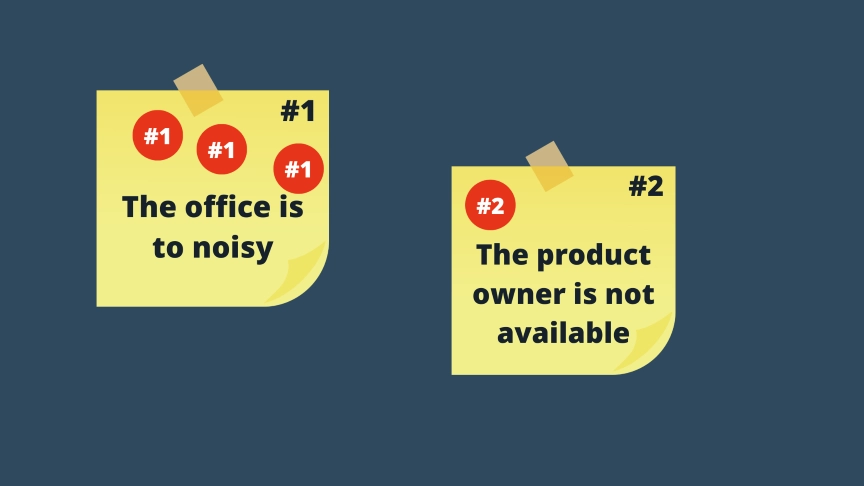
Prioritizing when dot voting
After everyone has voted, you can now start creating a list of priorities.
It is as simple as taking the highest-voted item and putting it at the top of the board. Then take the second most voted issues and put them right below the highest voted items. And do this for the third most voted items. Don't bother with the low-voted items as you will not have the time to focus on these during the retrospective.
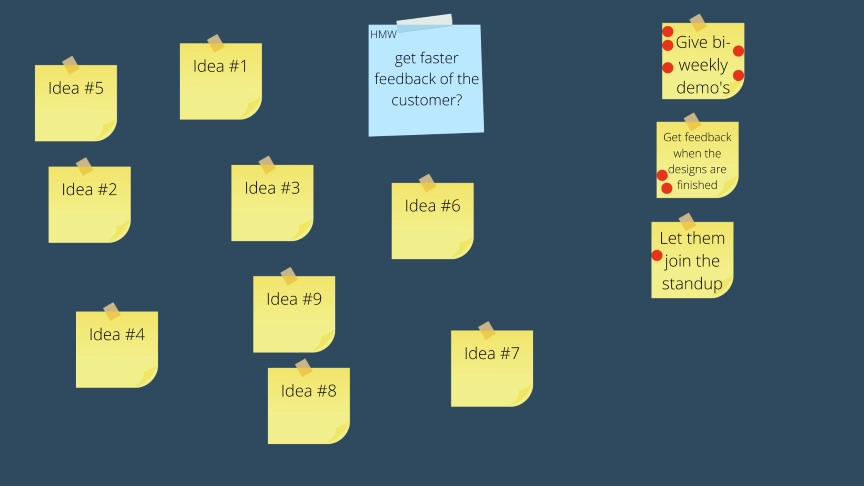
Straw poll voting
Straw poll voting is my favorite way of voting during a retrospective. It gives the participants the ability to vote and give their opinion on their choice.
Everyone gets one vote - I use a big dot with their initials marked on it - and cast their vote in a set amount of time.
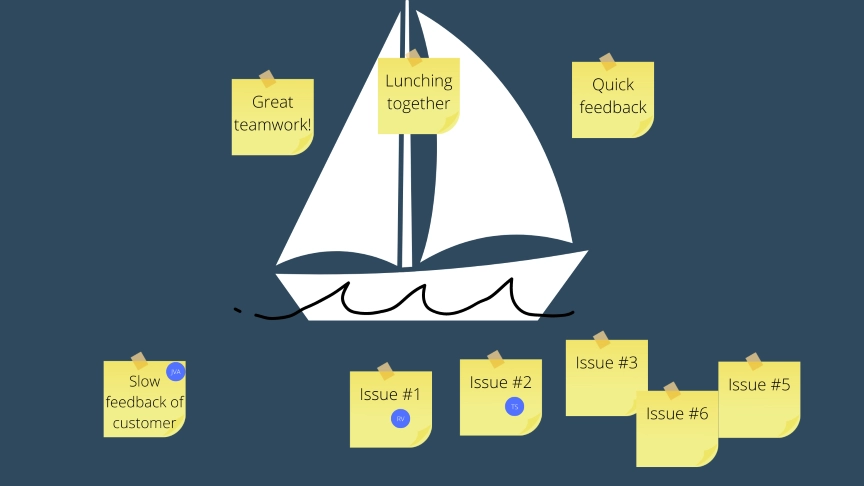 After the voting is done, every participant gets a maximum of 2 minutes to give their reasoning on why they chose that issue.
After the voting is done, every participant gets a maximum of 2 minutes to give their reasoning on why they chose that issue.
Now prioritize the issues again with the most votes at the top.
Decider vote
The name already explains what it is. But here is the explanation anyway. The decider vote is one vote the decider of the workshop/retrospective gets.
For a retrospective, this is most likely the Scrum Master. It gives the Scrum Master the ability to choose another topic when the team avoids the elephant in the room.
You can use a big dot with a star in the middle as the decider vote. I rarely use the decider vote since our team knows what issues they need to focus on. I only use it when they are avoiding difficult topics.
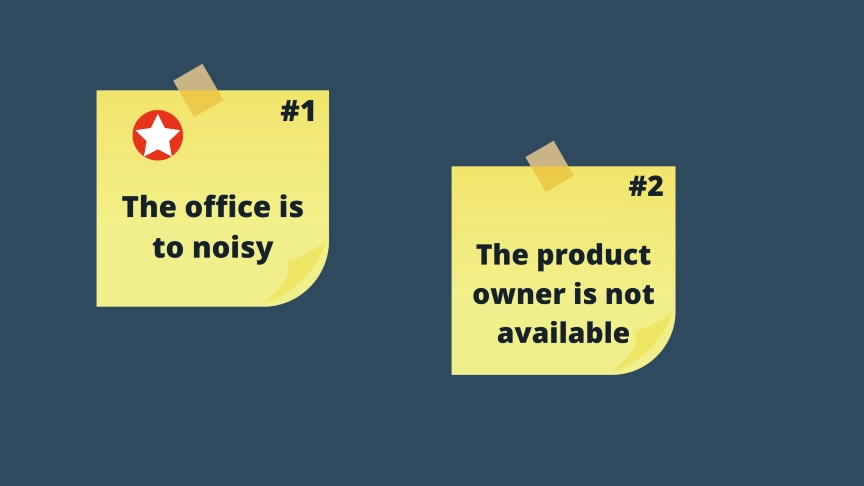
Layered voting
You can level up the voting strategy you use during your retrospectives by layering the strategies above!
Two-layered voting
The two-layered voting strategy is the one I use the most. It gives you a heat map of the most critical issues, and you get an explanation from each team member why this issue should be addressed.
So how do you use two-layered voting?
As the first layer, I'm using the dot voting strategy. I give each participant 5 votes and let them vote anonymously for 2 minutes.
The second layer is the straw poll voting strategy. Here I give each participant a big dot with their initials on it. They get 1 minute to cast their vote. They already have an overview of the issues by this point, so 1 minute will suffice. After this minute, each person presents to the group why they chose this issue in 2 minutes.
Now the voting is done, it is time to prioritize the list of issues. I use the following calculation for prioritization:
| Vote | Points |
|---|---|
| Dot vote | 1 |
| Straw poll | 2 |
Using this point system makes it easier for you to prioritize the chosen issues.
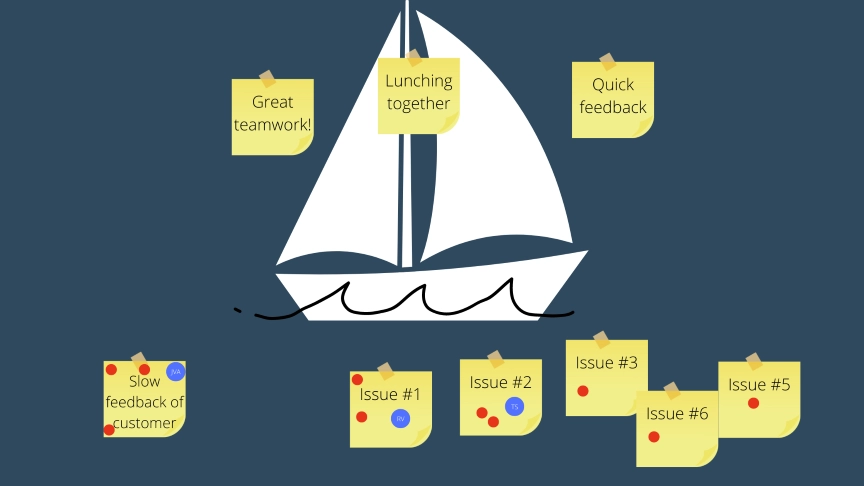
WATCH OUT! When you give more votes during the dot voting phase. Make sure to alter the calculation. The straw poll can be 3 or 4 points.
Gotcha! When you give more straw poll votes. Alter the calculation to 1 or 2 points.
Three-layered voting
The three-layered voting continues from the two-layered voting explained above.
The third layer we add is the decider vote.
Running a retrospective, the scrum master must have the choice to change the focus point to discuss issues, especially when the elephant in the room is being ignored. By using the three-layered voting, you get all the insights from the participants and if they are ignoring important issues.
So when the previous two phases of the voting are passed. The decider - the Scrum Master in the retrospective - gets one decider vote. The Scrummie can choose to use the vote or go with the team's flow.
Here is a table to calculate the priorities:
| Vote | Points |
|---|---|
| Dot vote | 1 |
| Straw poll | 2 |
| Decider vote | infinity |
The decider vote always wins over the other participant's votes. This is why this vote is going as last. We want to get the input of our participants before deciding on what to focus on.
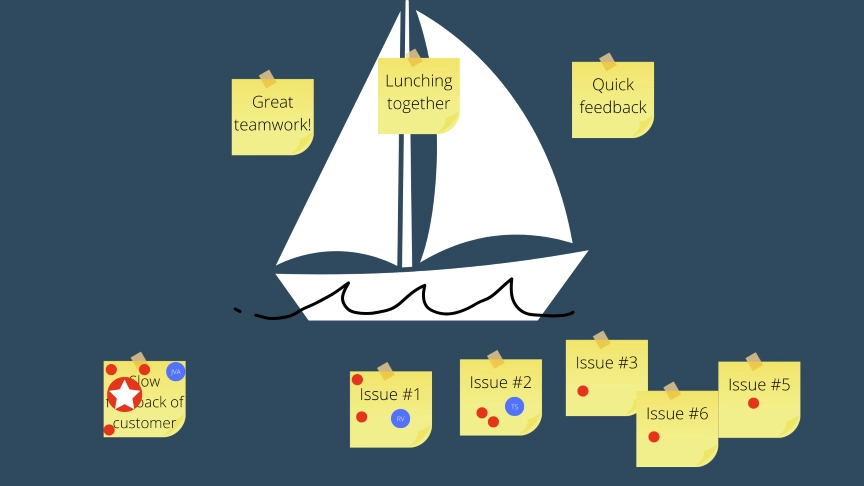
You can give the decider multiple votes if needed. This is mainly used when you are doing a problem-solving workshop and not a retrospective.
Conclusion
In conclusion, voting is a powerful tool during agile retrospectives to prioritize the issues raised by the team. There are three main voting strategies, including dot voting, straw poll voting, and decider vote, each with its own benefits and considerations. The two-layered voting strategy combines dot voting and straw poll voting to give a heat map of the most critical issues and an explanation from each team member. The three-layered voting adds a decider vote to overcome difficult topics. By layering voting strategies, teams can make informed decisions about what issues to focus on and prioritize.

